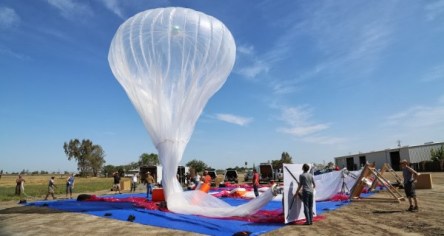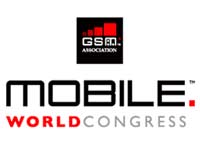Take a guess. How much time do you spend on your phone every day? Add up all those downward glances, text replies, phone calls and photo filters. If you’re like the average American, you spend 5.4 hours on your smartphone. And if you’re like me, that’s way more than you expected. Those numbers come from a recent study asked 2,000 smartphone users to check their phone settings and report their screen time. Not only did the study reveal just how attached we all are to our devices, but it showed that usage across generations is similar. Millennials spend only a little bit more time on smartphones (5.7 hours) than baby boomers do (5 hours). Over 50 times a day, we’re checking our phones. This year, Gartner anticipates that there will be over 20 billion connected devices. Just imagine how much more dependent we’ll be as these tools continue to pervade our homes and habits. Smart devices have led to incredible innovations, and they’re changing our lives like very few other communication technologies have before. By far one of the biggest differences is the way we interact with businesses. Why grab your car keys or dial a support line when the services you want are available at your fingertips in a mobile app? We now spend about 90% of our smartphone time in apps. Remember, that’s hours of every day. So for businesses looking to stay competitive, your mobile presence has to be top-notch. Of course, that goes for multifamily businesses too. You’ve spent so much time and money defining your brand strategy and designing your physical properties. Shouldn’t your mobile apps match? Put your brand in the palm of your residents’ hands Your residents are on mobile, so you should be too. Take advantage of this opportunity to connect with residents in the channels they prefer. “But wait,” you might say. “What about our company website? Doesn’t that work on mobile too? Why do we need an app?” Mobile websites are a valuable resource, but they can’t do everything a native mobile app can. Your mobile website is most often a shrunken version of the desktop website, accessible only from a browser and unable to offer a unique user experience or leverage phone capabilities like GPS, cameras or notifications. To top it off, consumers simply prefer mobile apps – by a large margin. One report suggests up to 85% of people prefer apps over mobile sites. Why? Convenience, speed and ease of browsing. It’s not just a matter of preference either. Apps have shown practical results as well. The conversion rate for apps is more than three times higher than on mobile websites. And if the app is poorly designed, 55% of people say it’d put them off using a company’s products or services, and nearly as many would be less likely to recommend the company to others. Clearly, your mobile app experience matters. It’s why we’re excited to introduce MyCafé by RENTCafé. The new white label mobile app for residents helps you promote your brand on the devices they use every day. Build awareness for your business and offer residents the convenience they expect in an app you own. You can brand the look and feel of the entire experience: Pick an app name that renters recognize Select colors to reflect your brand Feature images of your own properties Upload an icon that stands out Customize menu options to fit your needs MyCafé has the same powerful and popular features that are built into our standard RentCafe Resident app. Your renters can submit maintenance requests, make online payments, reserve amenities, interact with neighbors and more, all from their smartphone. And your property managers have the ability to offer lease renewals and electronic signatures on the go, with push notifications to let residents know when action is needed. If your property already uses RENTCafé Resident, you won’t have to...
Welcome to Mobile 5G
AT&T Selects 12 Cities
We can all use faster internet! Make daily operations more efficient for your staff with the latest advance in US mobile technology. Beginning spring 2019, AT&T will offer a faster internet speed for mobile devices in 12 cities. 5G, Revamped If you feel like you already read about this early in 2018, you’re sort of right. AT&T introduced a version of 5G earlier in the year. It was 5G TF, which came with a ton of limitations. T-Mobile CEO John Legere was quick to point out those shortcomings on Twitter, “I cannot begin to explain how important 5G is going to be for this country, so I have to say congrats to Verizon on delivering its 5G* Home Service today. It doesn’t use global industry standards or cover whole blocks and will never scale… but hey, it is first, right?!” AT&T’s limited release was offered to residences via the Netgear Nighthawk 5G Mobile Hotspot in more than 20 cities. Now, the Dallas-based company ups the ante with mobile access on 5G NR, the more commonly accepted application that meets industry standards. The new 5G offers faster speeds and very low latency. That means you will be able to enjoy faster responsiveness from Yardi Voyager property management software: quickly upload receipts, forms, and other files to the cloud for easy access and safe storage. Your team can reach more prospects by live streaming property tours and events on Facebook, Instagram, and Snapchat. With delivery and rideshare services skyrocketing, you’ll have an advantage with 5G. Your communities can offer safer access to driverless vehicles. The applications are endless. Mobility, Faster Without mobile devices that can keep up, mobile 5G would be unexciting. Fortunately, the first 5G-compatible handsets should be available in early 2019. Samsung has promised...
Connecting from Afar
Internet Goes Remote via Balloon
As a Peace Corps volunteer serving in rural Paraguay, I encountered moments when a quick internet search would have been a blessing. The resource could help with verb conjunction as I fumbled through Spanish or event planning during the rainy season. I shrugged off the inconvenience as part of the job. Away from the city, internet connectivity simply wasn’t an option. Now, an exciting new project delivers life-altering internet connectivity for isolated communities. Google’s recent launch of super pressure balloons, dubbed Project Loon, has drawn attention to the emergence of balloon-based internet connectivity. Space Data and World Surveillance Group have launched similar projects, mainly for military purposes. Google is the first to use the technology to bring 3G speeds to remote areas for civilian use. The company is also the first to attempt long-term operations using the balloons, currently up to 100 days. If it works out, here are the kinds of problems that Project Loon could solve: Back in 2010, my Paraguayan students were in a frenzy over the FIFA World Cup. I jumped on the opportunity to turn their fanaticism into a learning experience. We began a geography series highlighting dominant teams like Spain, Brazil, Uruguay, and the Netherlands. As I began the class session on Japan, I remembered a college friend who was teaching in Tokyo at the time. I thought: How awesome would it be to have our students interact with each other in real time. They could see one another’s faces and take a little tour of each other’s worlds. In my rural station, access to basic necessities was scarce. Forget smartphones and data plans. The infrastructure simply was not available. Google’s balloon-based connectivity could change that. On a larger scale, balloon-based connections permit nonprofits, hospitals, and businesses in developing regions...
Mobile Goes Global
2013 Mobile World Congress
Europe hosts the world’s premiere mobile event, a supersized tech fair that recently brought together over 72,000 participants from more than 220 countries and over 1,700 companies. Held this year in Barcelona, the Mobile World Congress is where the latest innovations in the mobile ecosystem are revealed, with emphasis on the technology behind the scenes such as networks, support systems, connected spaces, and more. This is the ultimate event for any technology fan, featuring exciting phones, tablets, back-end solutions, applications, and accessories. At this year’s event, over 50 percent of the attendees were C-level executives. Keynote speakers included Dr. Paul Jacobs, Chairman & CEO – Qualcomm, Stephen Elop, President & CEO – Nokia, Gary Kovacs, CEO – Mozilla, Mitchell Baker, Chairman – Mozilla, Dennis Crowley, Founder & CEO – Foursquare, Drew Houston, Founder & CEO – Dropbox, René Obermann, CEO – Deutsche Telekom, Axel Dauchez, CEO – Deezer, Randall Stephenson, President & CEO – AT&T, Franco Bernabè, Chairman, GSMA, Chairman & CEO – Telecom Italia Group, and Vittorio Colao, Chief Executive – Vodafone. There were many big announcements and unveilings. Highlights included: Qualcomm’s Snapdragon 600 SoC (system-on-chip) phone lacks a competitive peer. The company makes the world’s most sophisticated 4G modems, advanced radio frequency connectors, and can roll a mind-blowing applications processor to boot. It’s truly impressive how Qualcomm managed to fit 4 “Krait” cores, Adreno 320 graphics, and an on-die LTE modem into a phone; it wouldn’t come as a surprise if they will be taking on more of Samsung’s business. Nvidia and Intel have made good progress on the mobile SoC branch, but not good enough to consider themselves competitors. Neither has the capability to deliver an integrated LTE modem with apps processor sooner than the end of 2013. This year Qualcomm runs unopposed. Nokia announced to everyone’s delight that they’re making a wireless...




